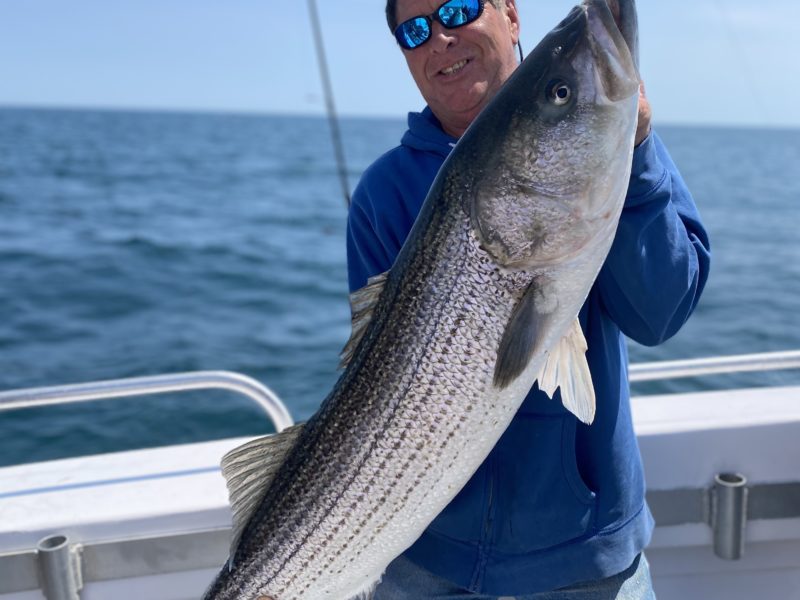

The summer of 2021 appears to be setting up to be a historically busy one on local waters — starting this weekend, probably.
Gas prices seem headed toward $5 a gallon on the water, and finding an available docking slip anywhere is nearly impossible — and unfathomably expensive when possible — which might keep some of the traffic in check. But if you think there were a lot of new boat owners on the water last summer, hold on to your hats (and the steering wheel) this weekend.
It’s worth a reminder that there is an important new rule in effect for striped bass fishermen this year: no more “snag-and-drop.”
The big stripers are making their way into our waters and are starting to show up under the bunker schools in the ocean off our beaches, which can be a prime opportunity to catch a trophy striped bass. Snagging a bunker out of one of the schools and letting it swim can still be a great way to catch a big striper. But you cannot do it in one step — and with good reason.
Starting this year, it is illegal to use a treble hook when fishing with any type of bait for striped bass. So, if you are snagging bunker out of the school and want to live-line it, you will have to reel it back to the boat and swap it to a single hook.
Is this extra step a hassle? Yes.
Is it as effective as just letting the snagged bunker spiral out of the school to the bass lurking below? No, definitely not.
But will it mean a lot fewer striped bass that can’t be legally killed anyway won’t be mortally wounded by a giant treble in their throat? Yes, 100 percent.
I fiddled with ways to fish the bunker schools last spring without snagging and dropping. The first key is having a second rod rigged with the circle hook and ready to fish for a quick switchover. There are times when ripping the snagged bunker out of the school, quickly sticking a circle hook through its nose and lobbing it back into the middle of the bunker school works just fine. Other times, not so much. Often a bluefish will hone in on the bunker as you yank it away from the school, and you have to start over.
I tried a few different approaches and all of them worked in some instances.
When fish were clearly marauding through a school, opening up big, clear patches, just tossing the bunker straight into the open spot got it eaten sometimes.
Putting a small egg sinker just above the circle hook to encourage the bunker to swim down out of the school seemed to work a little better than just a plain hook.
When there weren’t many signs of fish actually crushing on the school, I tried reeling in the bunker and chopping its tail off, as though it had been bitten by a bluefish, and then tossing it into the middle of the school and letting it sink below them. This did seem to attract more bluefish bites but also accounted for one of my bigger fish last year.
The other option, of course, is to skip the bunker snagging and the bloody hassles it results in, and just use the bunker schools like they were structure for fishing artificial around them. I have found that, more times than not, if there are bass actively feeding on a school of bunker, they will eat an artificial worked diligently around the school. Big pencils and spooks that make a lot of splashing and noise on the surface seemed the best. I removed the back hooks entirely to reduce the number of bluefish hook-ups.
Just some ideas. There should be plenty of opportunity to test these and other approaches by this weekend.
If big stripers are not worth the time if they can’t go in the cooler, there are plenty of keeper-sized fish to be had. Drifting live baits in Shinnecock Inlet, trolling the Shelter Island Ferry Slip and diamond jigging the rips off Montauk are all producing lost of fish in the 28-to-35-inch range now.
There is also some spectacular fluke fishing happening off Montauk and a very good weakfish bite in the Peconics, along with lots of big porgies in Little Peconic Bay.
So there’s plenty to keep us all happy. Play nice with others and be very alert on the water this weekend and all summer as the aforementioned new boaters need a wide berth.
But those big fish over 35 inches may not be kept — and anglers should be taking the utmost care to release them unharmed.
Catch ’em up. See you out there.
 More Posts from Michael Wright
More Posts from Michael Wright